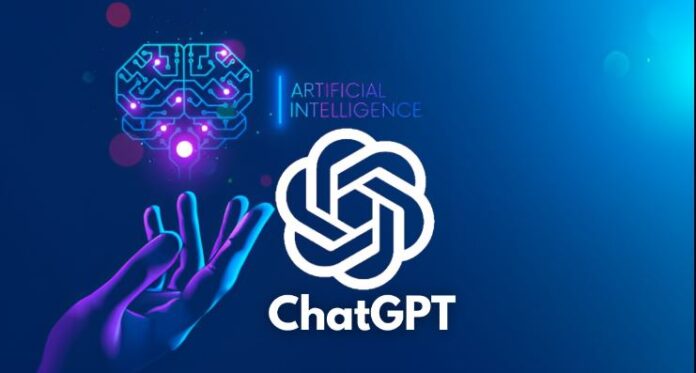Introduction:
As technology continues to advance at a rapid pace, artificial intelligence (AI) and natural language processing (NLP) models have made significant strides in recent years. OpenAI’s GPT (Generative Pre-trained Transformer) series is at the forefront of this progress, with each iteration improving upon the previous one. In this article, we will explore the key differences between GPT-3.5 and GPT-4, two prominent versions of this revolutionary AI language model.
GPT-3.5 Overview:
GPT-3.5, released in 2021, represented a major leap forward in AI capabilities. It contained a staggering 175 billion parameters, making it one of the largest and most sophisticated language models to date. GPT-3.5 excelled in a wide range of NLP tasks, including text completion, language translation, question-answering, and much more. Its impressive performance was achieved through unsupervised pre-training on a vast amount of internet text, enabling it to generate coherent and contextually relevant responses.
GPT-4: The Next Evolution:
GPT-4, the successor to GPT-3.5, builds upon the strengths of its predecessor while introducing several noteworthy enhancements. Though specific details about GPT-4 are yet to be released at the time of writing, we can speculate on the potential improvements based on the general trajectory of the GPT series and the evolving field of AI.
- Increased Model Size and Parameters:
One of the anticipated differences between GPT-3.5 and GPT-4 is an increase in model size and the number of parameters. GPT-3.5 already pushed the boundaries with its 175 billion parameters, but GPT-4 is expected to surpass that, possibly reaching the 250 billion or even the 300 billion parameter mark. A larger model size allows for improved context understanding, enhanced language generation, and more accurate responses.
- Enhanced Contextual Understanding:
GPT-4 is expected to demonstrate a significant improvement in contextual understanding. This means it will have a better grasp of the nuances and subtleties of language, leading to more accurate and contextually appropriate responses. The model will be able to consider a broader context while generating text, resulting in more coherent and human-like output.
- Reduced Bias and Ethical Concerns:
OpenAI has been actively addressing concerns related to bias and ethical considerations in AI models. GPT-4 is likely to incorporate enhanced mechanisms to mitigate biases and produce more fair and inclusive responses. OpenAI’s commitment to ethical AI practices suggests that GPT-4 will undergo rigorous testing and fine-tuning to ensure it adheres to the highest standards of fairness and impartiality.
- Improved Multilingual Capabilities:
GPT-3.5 demonstrated remarkable multilingual capabilities, but GPT-4 is expected to take this aspect even further. With advancements in training methodologies and the availability of diverse language data, GPT-4 may exhibit superior performance in translation tasks and have a deeper understanding of a wider array of languages.
- Better Context Retention:
One area where AI language models can still struggle is maintaining context over longer passages of text. GPT-4 is expected to improve context retention, allowing it to generate more coherent responses in longer conversations or documents. This enhancement will greatly enhance the usability and practicality of the model across various domains.
| Aspect | GPT-3.5 | GPT-4 (Speculated) |
|---|---|---|
| Model Size | 175 billion parameters | 250 billion or more parameters |
| Contextual Understanding | Advanced contextual understanding | Further improved contextual understanding |
| Bias Mitigation | Efforts to reduce biases | Enhanced mechanisms for bias mitigation |
| Multilingual Capabilities | Strong multilingual capabilities | Superior performance in translation tasks |
| Context Retention | Limited context retention | Improved context retention for longer passages |
| Training Data | Trained on vast internet text | Enhanced training with diverse data sources |
| Fine-tuning | Fine-tuned for specific tasks | Better fine-tuning capabilities |
| Ethical Considerations | Adherence to ethical AI practices | Continued focus on addressing ethical concerns |
| Real-world Applications | Improved language generation for various tasks | Potential for more practical and nuanced applications |
Conclusion:
While specific details about GPT-4 are still forthcoming, we can anticipate several notable advancements based on the trajectory of the GPT series and advancements in the field of AI. GPT-4 is expected to feature a larger model size, improved contextual understanding, enhanced bias mitigation mechanisms, superior multilingual capabilities, improved context retention, and more practical real-world applications. OpenAI’s commitment to ethical AI practices suggests that GPT-4 will address concerns related to bias and promote fairness and inclusivity. As AI models continue to evolve, GPT-4 represents another significant step toward achieving more human-like language generation and understanding.
Please note that the information provided in this article is speculative and based on the general trajectory of the GPT series. The actual features and improvements of GPT-4 may vary once it is officially released by OpenAI.






